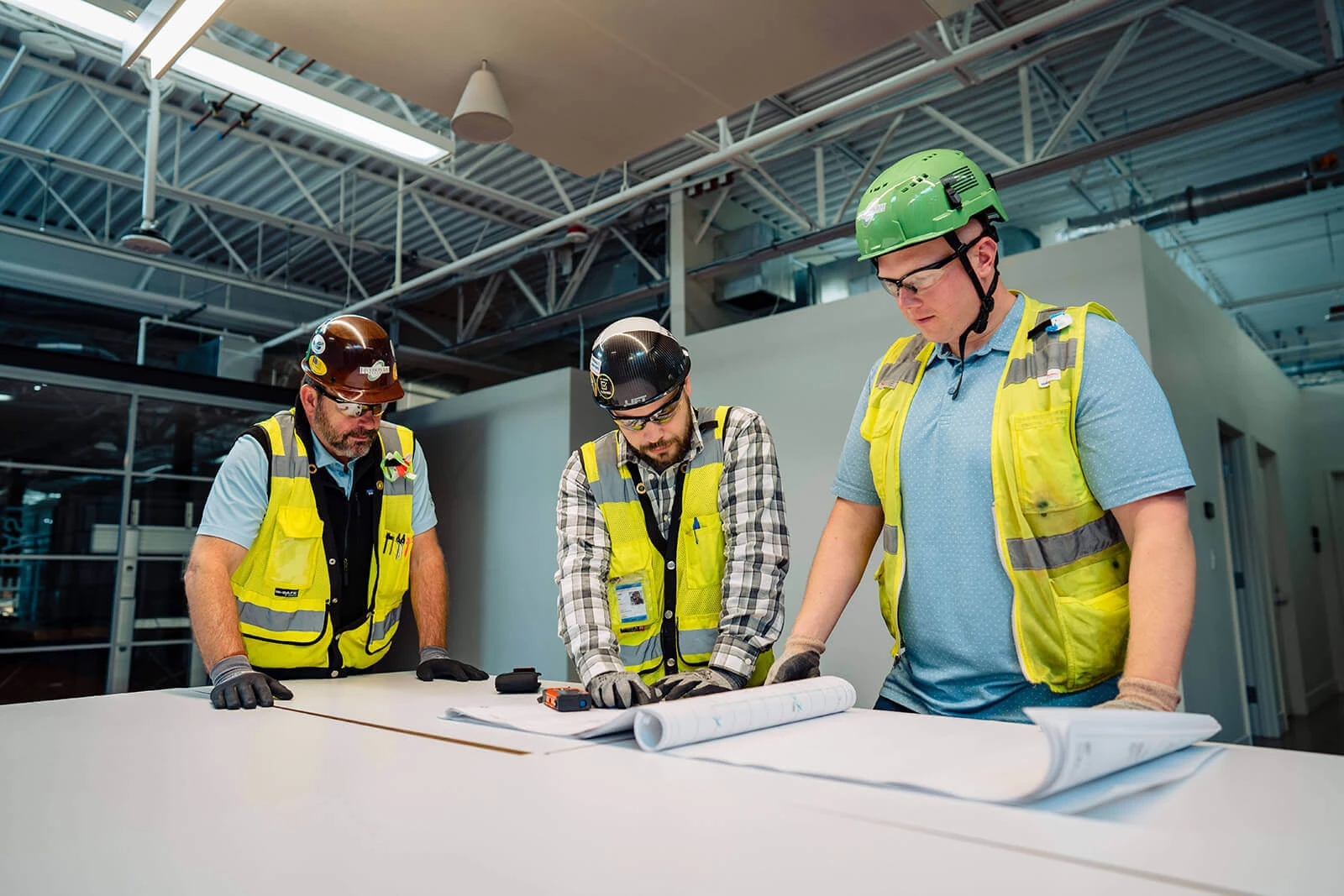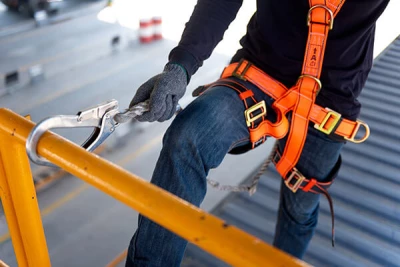The Negative Side of Quick Reactions
Published 8.1.2023
There are many times when quick reactions put people in the line of fire where they can be hurt. A person sees a situation occurring, and in an instant, their mind tells their body how to react. At work, an impulsive decision to jump in and try to help in a situation that goes wrong may be the last decision a person makes. It is important to consider what our first reaction may be to certain situations and attempt to fight the urge to react impulsively without thought.
One would think that reaction time would take a lot longer than it actually does due to all the moving parts our bodies have responding to one another. For example, one of your tools is sitting on a work surface, you bump that surface, and the tool slides over the edge and begins to fall. You see this occurring, and in less than half a second, you stick your hand out in an attempt to catch the tool.
In the small amount of time from the tool beginning to fall to you reaching out your hand, a lot of processes are occurring in your body to create this reaction. According to Scientific American, first, the information travels from sensory cells called neurons from the eye to the brain's visual cortex, an area devoted to understanding what you see. Next, the motor cortex - the part of the brain that directs movement - has to send signals along your spinal cord and to your arm, hand and finger muscles, telling them to respond in the proper sequence to catch the tool - quick!
While the fact that all these processes take place in under half a second is amazing, it can also serve as the nail in the coffin during a bad situation at work. In our dropped tool scenario, what if there is moving machinery in our path where we are sticking our hand on a hot surface? A crushed finger injury would also be very likely if you find your hand between the tool and a surface below. While these injuries are relatively minor, there are many examples of bad incidents that turned deadly due to a quick reaction by someone nearby.
An all-too-common occurrence in confined space work is multiple fatalities. There have been many situations when one worker falls victim to hazardous conditions in a confined space, and then bystanders make the quick decision and react to try to rescue the victim. The hopeful rescuers quickly become victims themselves.
REMEMBER THIS!
THERE ARE TIMES WHEN A QUICK REACTION IS THE ONLY THING THAT SAVES A PERSON'S LIFE. ON THE OTHER HAND, THERE ARE ALSO TIMES WHEN QUICK REACTIONS PUT PEOPLE WHO ARE COMPLETELY SAFE DURING A BAD SITUATION IN HARM'S WAY. BE AWARE OF THE IMPULSE TO ACT WITHOUT PROPER THOUGHT. TAKING EVEN JUST A SECOND TO EVALUATE THE IMPLICATIONS OF A DECISION TO ACT MAY MAKE THE DIFFERENCE IN PREVENTING AN INJURY TO YOU OR YOUR COWORKER.
Working Alone
Published 8.8.2023
A key component to safety is watching out for each other. However, working alone presents a fundamental challenge to watchfulness. How can someone watch a team member's back if that team member is working alone or out of sight?
At times you are a lone worker all by yourself, no co-workers around, maybe no one at all. In some cases, you may not only be alone but in an isolated area that may be hard to access or where no one really goes or even working off-hours at night. These circumstances pose unique situations and some inherent safety challenges.
- Emergency situations and procedures
- Access to emergency supplies and equipment
- Limited or non-existent communication
- You may be the only one to see the work area and hazards
- No one to watch out for you
There should be standard times throughout your shift that you check in with someone, especially if you are in areas that you can't be reached by cell phone or radio. If you feel that you shouldn't be alone because you are not feeling well or have a health concern, please let your supervisor know. if the nature of the work or the environment is hazardous, please let your supervisor know the situation, so we can best formulate a plan that ensures your personal safety.
It is critical that you are keenly aware of your surroundings and the potential hazards. Follow all our policies and procedures to maximize your protection and safety. Be familiar with the work site, how to get in and out of areas, know who to call in case of an emergency, where fire extinguishers and safety showers are, the location of eye wash stations, first aid, and AED stations.
As a reminder, we have created a communication process for our employees who either work alone or are in areas of isolation. This process will be accomplished by sending a text no less than three times during your shift. Those texts should be simple and around the three key times of work: starting work, at lunch or break, and upon completing your shift. This process provides you and your supervisor with a method for tracking your safety when working alone.
REMEMBER THIS!
IF YOU FEEL UNSAFE OR NEED HELP TO SAFELY PERFORM YOUR WORK, PLEASE CONTACT YOUR SUPERVISOR, A MEMBER OF THE SAFETY TEAM, OR THE SAFETY DEPARTMENT IMMEDIATELY.
Overexertion
Published 8.15.2023
Many workplace injuries are a result of overexertion caused by lifting, pulling, or pushing objects. Overexertion is spraining a ligament or straining a tendon or a muscle and occurs when the amount of work attempted exceeds the limits of the body parts doing the work.
People with preexisting conditions, limited mobility, or aging limitations are more prone to overexertion injuries. In some cases, individuals will overuse one body part to compensate for the limitation of another body part.
Overexertion injury is likely to occur in four ways:
- High force demands. This can happen when lifting, pushing, pulling, carrying, gripping, and using tools.
- Awkward or stationary posture. This can occur when bending, twisting, reaching, and kneeling.
- Repetitive movements or actions. Doing the same motion repeatedly without taking a few small rest breaks can cause this.
- All other overexertion hazards. This includes contact stress, hand-arm vibration, whole-body vibration, hammering hand, and working in cold temperatures or hot environments.
Some guidelines to reduce the risks of overexertion injuries:
- Ask for help when moving heavy objects
- Use material handling devices, carts, or hand-trucks to move heavy items.
- Push, rather than pull the load.
- Plan a route when moving items. The route should be free from slip or trip hazards.
- Establish a suitable working height depending on the type of work being done.
- Use kneepads while kneeling or padded gloves when lifting to reduce contact stress over long periods of time.
- Place materials used often between waist and shoulder height.
- Know your limits and respect them. Listen to your body when it tells you to stop.
REMEMBER THIS!
THE BEST WAY TO PREVENT AN OVEREXERTION INJURY IS TO WORK THROUGH THE TASK IN YOUR HEAD TO FIGURE OUT THE WAY TO BEST PERFORM THE TASK WITH THE LEAST AMOUNT OF ENERGY, AND THEN FOLLOW THROUGH WITH THE PLAN BY TAKING NECESSARY PRECAUTIONS.
Mobile Scaffolding
Published 8.22.2023
Scaffolding can be a great solution to safely access elevated work and create a stable platform to perform our work on. Mobile scaffolds, often referred to as Baker or Perry scaffolds, can be simple and useful to use but can pose significant danger.
One of the greatest hazards with mobile scaffolds is the risk of overturning or collapsing. You may need to set up, move, and dismantle it by yourself which can be difficult to do, anything beyond a single level must be done with more than one person. Workers who utilize mobile scaffolds, as well as those who erect and disassemble them, must be familiar with manufactures instructions, common hazards, and the correlating requirements.
- The scaffold must be erected with cross, horizontal, or diagonal braces (or a combination of these) to prevent tracking and provide a rigid structure.
- The scaffold must be plumb, level, and square. All brace connections must be securely fastened with pins/connectors.
- Use outriggers as needed based on height of the scaffold. The scaffold casters must have a positive wheel and swivel locks to prevent movement of the scaffold when it is in use.
- The manual force used to move the scaffold must be applied as close to the base as possible, not more than five feet above the supporting surface.
- Employees will not ride on scaffolding. It is a good safety practice that no one be on the scaffold while it is being moved.
- Avoid using scaffolds on unfinished or rough surfaces.
- Evaluate the surrounding area, including ground conditions, before moving a scaffold.
- Check overhead clearance for power lines or other possible hazards before moving a mobile scaffold. Stay at least 10 feet away from all power lines.
- Inspect all scaffold prior to each day's use.
- Never load a mobile scaffold beyond its maximum capacity.
- Use extreme caution when mounting and dismounting.
- Follow all fall protection rules and use a rope to raise and lower materials and tools.
REMEMBER THIS!
SERIOUS INJURY AND IN SOME CASES DEATH, HAVE BEEN KNOWN TO RESULT FROM FAILURE TO RECOGNIZE KNOWN HAZARDS AND GUARD AGAINST THEM. YOU MUST ENSURE THAT THE PROPER PRECAUTIONS ARE TAKEN, AND THAT THE DEVICE IS KEPT IN GOOD CONDITION.
Labor Day Weekend Safety
Published 8.29.2023
The first Monday in September is dedicated to celebrating the achievements that American workers have made to the strength, prosperity, and well-being of our country. There is no reason your Labor Day celebration cannot be as safe as it is fun. Labor Day signals the end of summer and the last weekend to swim, grill, and enjoy the weather before the changing seasons drive us back indoors. While no one Labor Day activity is particularly unsafe, the combination of crowds, alcohol, increased travel, and trips to water often require us to take safety into consideration when implementing our holiday plans.
The following safety tips reminds everyone to take a few minutes to ensure that your holiday festivities are as safe as possible this Labor Day weekend. If you will be traveling, keep in mind the traffic will be heavy therefore, we urge you to:
- Do not drink and drive. Designate a driver or utilize Uber and Lyft.
- Carry an emergency kit. Your kit should include things like road flares, jumper cables, supplies for changing a flat tire, a first aid kit, and bottle water.
- Make sure someone knows your plans. Tell a trusted friend or family member when you are going and when you plan to arrive. Check in with them to let them know you got there safely. If anything happens and you cannot be reached, someone will know to send for help.
- Eliminate all distracting driving activities, especially using cellphones and mobile devices.
- Remain alert for other (potentially intoxicated) drivers and drive defensively.
Remember, even if you are not a drinker, chances are good that someone else at the lake is. Be conscientious of individuals with impaired judgment who may be in or near swimming areas. On the water, remember to:
- Check weather and water conditions before and throughout the day
- Always swim with a buddy in designated swimming areas supervised by a lifeguard
- Constantly supervise any children in or near the water
- Provide young children and inexperienced swimmers with Coast Guard-approved life jackets.





